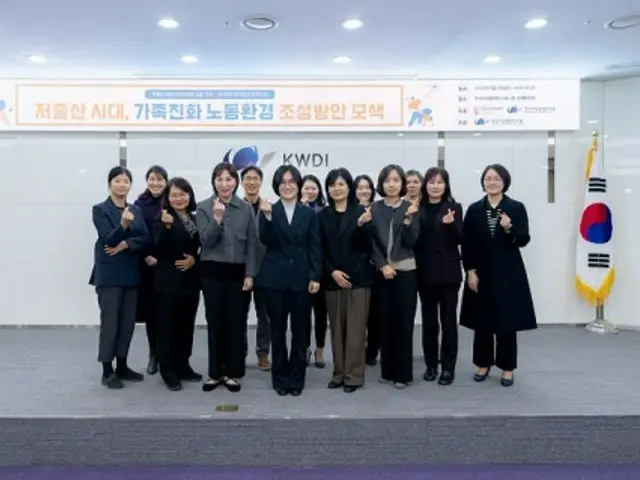It was argued that there was a need to consider ways to do so. On the 29th, the Committee on Declining Birthrate and Aging Society and the Korea Institute for Women's Policy Research held a meeting at the Korea Institute for Women's Policy Research in Eunpyeong-gu, Seoul to discuss the ``Declining Birthrate Era''.
The 135th Gender Equality Policy Forum was held with the theme of ``Exploring ways to create a family-friendly work environment''. At the forum that day, Jung Sunmi, a research committee member at the Korea Women's Policy Research Institute, spoke to elementary school students.
We announced the results of a survey of 1,500 people aged 19 to 59 who have the following children: ``Actual usage of the shortened working hours system during the childcare period.''
The system for reducing working hours during childcare period is available to workers with children under the age of 8 or in the second grade of elementary school.
This system allows employees to adjust their working hours within 15 to 35 hours per week so that they can work and take care of their children at the same time. According to the survey results, 14.4% (216%) of the total respondents used the system.
He was nothing more than a person. The remaining 85.6% (1284 people) did not use the system. The reason for this is that the company does not have any relevant regulations and there are no cases where it has been used (32.6%).
Due to gender, it is not possible to shorten working hours (22.2%), salary is reduced but actual work hours are not reduced (11.7%), and other employees are concerned about the appearance of the employees (10.0%). system
4.9% said they were unable to secure sufficient time to raise their children, 4.0% used other systems such as flexible work, and 1.2% applied but were turned back.
Women (58.8%) had higher awareness of the system than men (37.8%). The actual utilization rate for women (68.0%) was higher than that for men (3%).
2.0%). The rate of awareness of the system by age group was highest for those aged 34 and under at 58.2%. Utilization rate is 37.0% for ages 35-39, 35.0% for ages 40-44, and 19.0% for ages 34 and under.
The order was The utilization rate by company size was 32.0% for 300 or more people, 26.0% for 5-29 people, 22.0% for 100-299 people, and 20.0% for 30-99 people.
By job type, clerical, managerial, and professional occupations accounted for the majority of system users at 81.0%. 13.0% are in sales, sales, and service occupations, 13.0% are in sales, sales, and service occupations; 13.0% are in sales, sales, and service occupations;
Pure labor jobs followed at 6.0%. 72.0% of those who took advantage of the system for reducing working hours during childcare period said they had taken childcare leave.
Professor Ryu Yong-gyu of the Department of Social Welfare, Seoul Theological University, who participated as a discussant, said, ``
The system for shortening working hours during childcare periods is not being fully utilized due to factors such as the workplace atmosphere and the difficulty of securing replacement personnel. Last year, only 12.8% of those who took childcare leave took advantage of shortened working hours during childcare.
"It was difficult," he pointed out. Furthermore, ``Looking at the development trends of childcare leave systems in Organization for Economic Co-operation and Development (OECD) member countries, we see that rather than increasing the length of childcare leave to two years, there is an emphasis on using it flexibly in one-day increments.
ing. "Reducing working hours during the childcare period is more appropriate than taking childcare leave to support the policy objective of allowing people to work and care for their children at the same time."
Researcher Chung said, ``Childcare leave and a system for shortening working hours during childcare should be integrated and managed to reduce time.
We need to consider long-term ways to make the childcare leave system available on an hourly basis."
2023/11/29 20:48 KST
Copyrights(C) Herald wowkorea.jp 83

